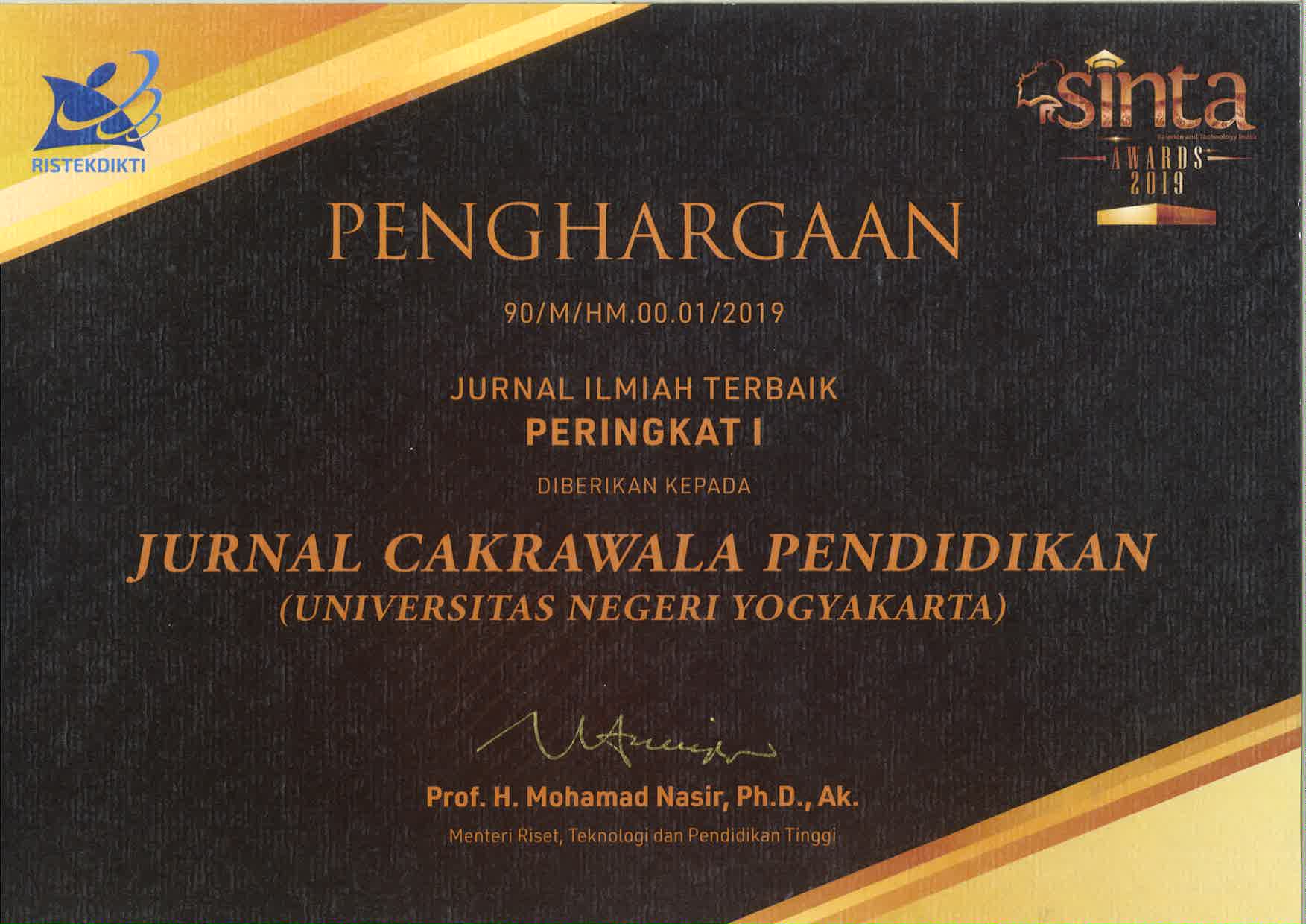Elections as a means of citizens political education: A comparative study between Indonesia and Malaysia
Downloads
Downloads
Alexander, A. C., & Welzel, C. (2018). Measuring effective democracy : The human empowerment approach new york stable url : https://www.jstor.org/stable/23040646 Linked references are available on JSTOR for this article : The Human Empowerment Approach. Comparative Politics, 43(3), 271–289.
Banducci, S. A., & Karp, J. A. (2003). How elections change the way citizens view the political system: campaigns, media effects and electoral outcomes in comparative perspective. British Journal of Political Science, 33(3), 443–467. https://doi.org/10.1017/S000712340300019X
Brownhill, R., & Smart, P. (1989). Political Education. Routledge.
Bungin, B. (2001). Metode Penelitian Kualitatif. PT Rajagrafindo Persada.
Case, W. (2017). Stress testing leadership in Malaysia: the 1MDB scandal and Najib Tun Razak. Pacific Review, 30(5), 633–654. https://doi.org/10.1080/09512748.2017.1282538
Eko, H., & Puji, L. (2017). Pendidikan Politik. Pohon Cahaya.
Ericson, D. P. (1991). Humanization, democracy, and political education. Studies in Philosophy and Education, 11(1), 31–43. https://doi.org/10.1007/BF00368402
Farisa, F. C. (2019). KPU Sebut Partisipasi Pemilih pada Pemilu 2019 Capai 81 Persen. Kompas.Com.
Gaffar, J. M. (2013). Demokrasi dan Pemilu di Indonesia. Konstitusi Pers.
Garnett, H. A., & James, T. S. (2021). Measuring electoral integrity: using practitioner knowledge to assess elections. Journal of Elections, Public Opinion and Parties, 31(3), 348–367. https://doi.org/10.1080/17457289.2020.1824186
Hai, L. H. (2002). Electoral politics in malaysia : "˜ managing ' elections in a plural society. Electoral Politics in Southeast {&} East Asia, 101–148. http://library.fes.de/fulltext/iez/01361inf.htm
Heyne, L. (2019). Democratic demand and supply: a spatial model approach to satisfaction with democracy. Journal of Elections, Public Opinion and Parties, 29(3), 381–401. https://doi.org/10.1080/17457289.2018.1544904
Ides, A. (2011). Loyola of los angeles law review approximating democracy : A Proposal for Proportional Representation in the California Legislature approximating democracy : a proposal for proportional representation in the california legislature. 44(2). https://digitalcommons.lmu.edu/llr/vol44/iss2/2/
Jayus. (2020). The general election results as the manifestation of popular sovereignty. Journal of Law, Policy and Globalization, 93(15), 169–180. https://doi.org/10.7176/jlpg/93-18
Kartono, K. (1989). Pendidikan Politik. Mandar Maju.
Mainwaring, S., & Scully, T. (1995). Building democratic institutions : party systems in Latin America. Stanford University Press.
Mananoma, S. R. (2015). Peran media elektronik dalam pendidikan politik masyarakat yang ada di kelurahan ondong. In Peran media elektronik dalam pendidikan politik masyarakat yang ada di kelurahan ondong kecamatan siau barat kabupaten sitaro. Universitas Sam Ratulangi.
MD, M. (2019). Politik Hukun di Indonesia. PT Rajagrafindo Persada.
Miriam Budiarjo. (2013). Dasar-Dasar Ilmu Politik Edisi Revisi. Gramedia Pustaka Utama.
Moniruzzaman, M., & Farzana, K. F. (2018). Malaysia'14th General Election: End of an epoch, and beginning of a new? Intellectual Discourse, 26(1), 207–228. https://journals.iium.edu.my/intdiscourse/index.php/id/article/view/1121
Nadzri, M. M. N. (2018). The 14th General Election, the Fall of Barisan Nasional, and Political Development in Malaysia, 1957-2018. Journal of Current Southeast Asian Affairs, 37(3), 139–171. https://doi.org/10.1177/186810341803700307
Osler, A., & Starkey, H. (2006). Education for democratic citizenship: A review of research, policy and practice 1995-20051. Research Papers in Education, 21(4), 433–466. https://doi.org/10.1080/02671520600942438
Owen, D. (2003). Democracy. In R. Bellamy & A. Mason (Eds.), Political concepts (pp. 105–117). Manchester University Press.
Pahlevi, I. (2014). Dinamika sistem pemilu masa transisi di indonesia. Politica, 5(2), 111–135. file:///C:/Users/hendrik/Downloads/339-658-1-SM.pdf
Pasaribu, P. (2017). Peranan partai politik dalam melaksanakan pendidikan politik the role of political parties in conducting political education. JPPUMA: Jurnal Ilmu Pemerintahan Dan Sosial Politik, 5(1), 51–59. https://ojs.uma.ac.id/index.php/jppuma/article/view/1125
Pratomo, Y., & Firdaus, R. F. (2014). Ini tingkat partisipasi pemilih dari Pemilu 1955-2014. Merdelka.Com.
Randall, V., & Sví¥sand, L. (2002). Party institutionalization in new democracies. Party Politics, 8(1), 5–26. https://doi.org/10.1177/1354068802008001001
Santoso, T. (2009). kewenangan electoral management bodies dalam menangani tindak pidana pemilu. Hukum Internasional, 6(4), 551–561. http://dx.doi.org/10.17304/ijil.vol6.4.215
Sanusi, A. R., & Darmawan, C. (2016). Implementasi pendidikan politik dalam membentuk karakter kepemimpinan lintas budaya pada generasi muda demi mewujudkan budaya politik pancasila. Jurnal Pendidikan Ilmu Sosial, 25(1), 24–40. https://ejournal.upi.edu/index.php/jpis/article/view/3668
Schwartz, B. (2014). Proportional Representation for Canada ? 28(2).133-137 https://canlii.ca/t/2cfj
Simbolon, F. (2016). Political Marketing Mix in Indonesia Parties. Binus Business Review, 7(1), 103. https://doi.org/10.21512/bbr.v7i1.1490
Sugiyono. (2015). Metode Penelitian Kualitatif, Kuantitatif, dan R&D. Alfabeta.
Sulaksono, T. (2016). Soft anti-party sentiment in indonesia. International Conference on Sosial Pilitics.
Sunarso, S. (2007). Pendidikan politik dan politik pendidikan. Jurnal Civics: Media Kajian Kewarganegaraan, 4(2). https://doi.org/10.21831/civics.v4i2.6026
Suparno, & Karmanis. (2020). The role of political education in building a democracy system in semarang jawa central indonesia. International Journal of Advanced Science and Technology, 29(4), 1743–1748. http://sersc.org/journals/index.php/IJAST/article/view/7390
Suparno, S., Karmanis, K., & Sunaryo, A. (2020). Government strategy in political education as public participation improvement to reach democracy system in semarang city. Politik Indonesia: Indonesian Political Science Review, 5(1), 86–101. https://doi.org/10.15294/ipsr.v5i1.23793
Surbakti, R., & Didik Supriyanto. (2013). Partisipasi warga masyarakat dalam proses penyelenggaran pemilihan umum. Kemitraan bagi Pembaruan Tata Pemerintahan.
Ticoalu, T. W. (2015). Pemberdayaan media massa dalam meningkatkan pendidikan politik pada masyarakat kelurahan wewelen kecamatan tondano barat kabupaten minahasa. E-Journal Acta Diurna Universitas Sam Ratulangi Manado, IV(3), 1–15. https://ejournal.unsrat.ac.id/index.php/actadiurnakomunikasi/article/view/8006
Weiss, M. L. (2015). Routledge Handbook of Contemporary Malaysia. Routledge.
Jurnal Cakrawala Pendidikan, Jurnal Ilmiah Pendidikan, with ISSN: 0216-1370, is published by the Institute of Education Development and Quality Assurance (LPPMP UNY). Cakrawala Pendidikan has been recently has been re-accredited by Indonesian Ministry of Education and Culture decision Number 230/E/KPT/2022 which is valid for five years since enacted on 30 December 2022.






























